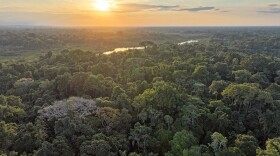There are over 3,500 species of mosquitoes. It’s nearly impossible to estimate how many individual mosquitoes there are worldwide. Estimates range from 110 trillion to over a quadrillion. Mosquitoes are found literally everywhere on Earth with only two exceptions: Antarctica and Iceland. Except now they have been sighted in Iceland.
Iceland has plentiful ponds and marshes, making it highly suitable for mosquitoes. It is only the frigid temperatures for most of the year that have made it an inhospitable place for them. But Iceland is now one of the fastest-warming regions on the planet, making it increasingly welcoming to mosquitoes.
An Icelandic insect enthusiast found three mosquitoes in his garden and sent them off to the Icelandic Institute of Natural History. They turned out to be a species that is commonly found in Northern Europe. How they got to Iceland is not known for certain. Mosquitos have previously been found on incoming boats and planes but have not been spotted on Icelandic soil before. Whether mosquitoes will survive the Icelandic winter and take root in Iceland remains to be seen. But as of now, only Antarctica remains mosquito-free.
The mosquitos found in Iceland are not known to carry disease, but as the planet warms, more dangerous mosquito species are moving into colder regions elsewhere. This increases the potential spread of yellow fever, dengue fever, Zika, and other tropical diseases. For example, Asian tiger mosquitoes, known to carry dengue fever, have now been discovered in the U.K. The south coast of England has become suitable for that species since the 2010s.







